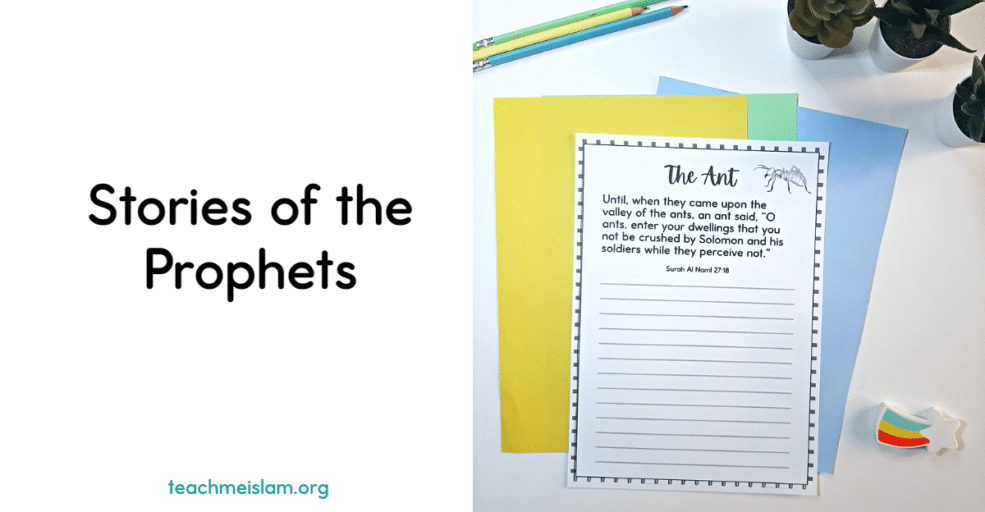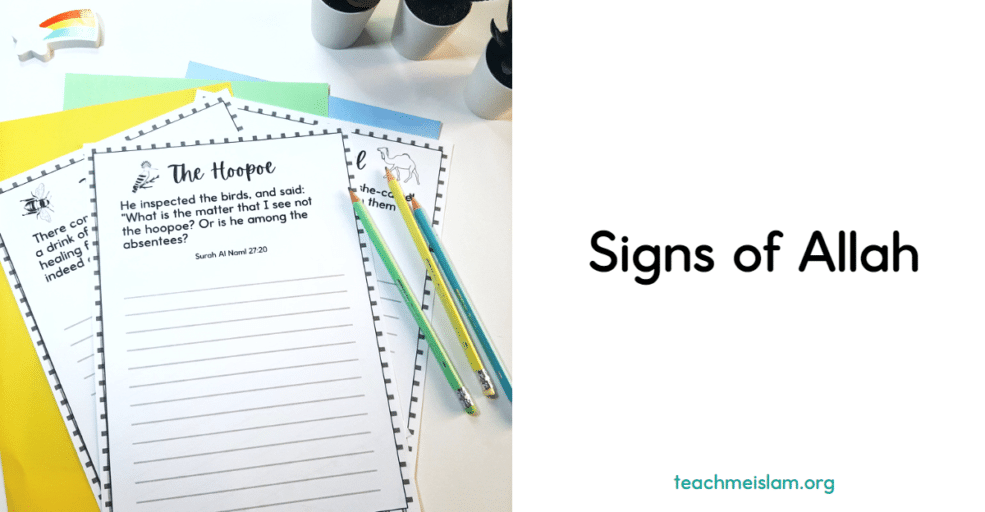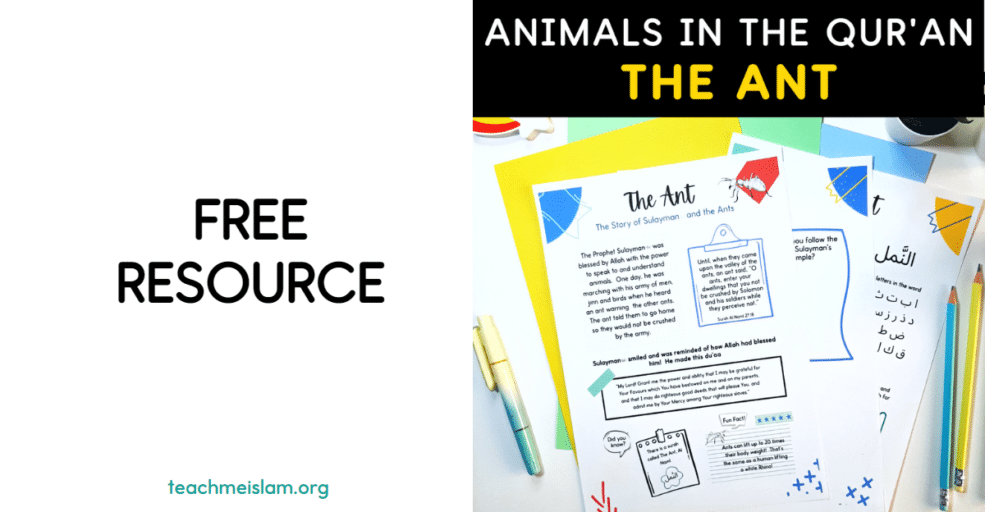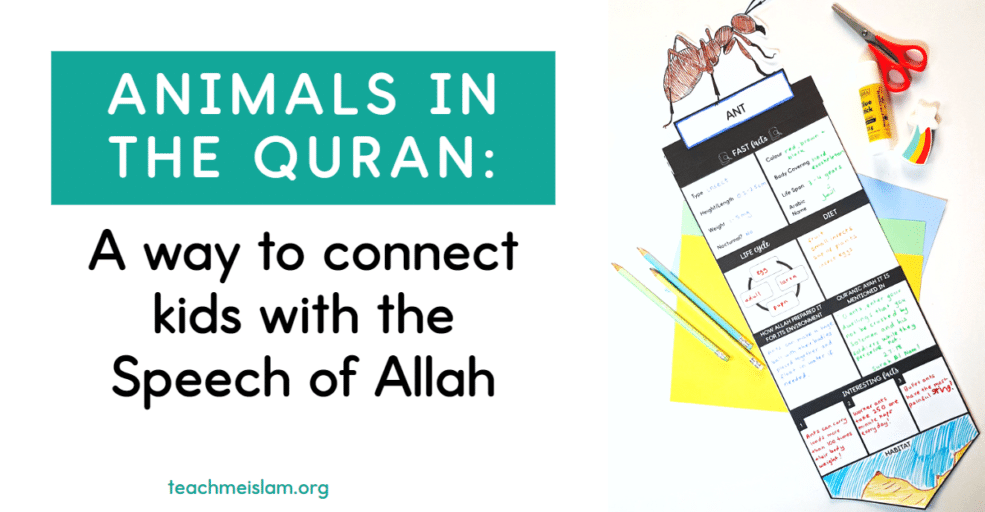Why is teaching kids about the animals in the Quran a great way of developing love and interest in the speech of Allah? Most children have a curiosity about animals and are eager to learn more. Plus sometimes the traditional format of studying a surah at a time can be challenging for younger kids. By focusing on each animal, they are learning stories of Prophets, reflecting on Allah’s signs and creation and becoming familiar with a range of surahs. Let’s explore the benefits of teaching about the Animals in the Quran to Muslim kids.

Stories of the Prophets
Animals in the Quran are closely associated with several stories of the Prophets. Sulayman (alayhi asalaam) was blessed with the ability to speak to and understand animals. As a result, there are two beautiful stories in the Quran of his interaction with animals, the hoopoe bird and the ants. Birds feature in the stories of Dawud, Isa and Ibrahim (alayhimusalaam). Salih’s sign to his people from Allah was famously the she-camel and Musa’s story features locusts, snakes and the cow. Allah told us the stories of the Prophets as a form of guidance for us and by sharing them with our children, we are helping them understand important lessons from the Quran.

Signs of Allah
We are invited to reflect on animals in the Quran several times. In Surah Al-Ghashiya 88:17, Allah poses the question Do they not look at the camels, how they are created? We are told that bees are a sign in Surah Nahl 16:68-69 and asked to reflect on bird’s flight in Surah Al-Mulk 67:19. Allah swears by horses in Surah Al-Adiyat 100:1-5 and uses the example of the spider’s web to describe the futility of seeking protection from other than Allah. Animals are signs of how great a creator Allah is and he uses them to teach us in his Book.

Quranic stories
Animals in the Quran do not just feature in the stories of the Prophets. They also feature in other stories, such as the dogs that guarded the people of the cave in surah Al-Kahf. The famous tale of the attempted destruction of the Ka’ba is told in Surah Al-Fil and is very popular with children especially as this is one of the first surahs that they memorise. The story of the donkey who came back to life is told in Surah Al-Baqarah 2:259 which is a powerful demonstration of Allah’s power to bring anything back to life. These stories all contain lessons that can be applied to our lives. Children learn from these stories to focus on understanding the message, learning the lesson and acting on it.
Many surahs are named after animals
As you probably know, there are many surahs that are named after animals in the Quran. Happily, children naturally learn the names of these surahs while they are learning the stories of the animals. In fact, there are six surahs named after animals: Surat Al Baqarah (The Cow); Surat Al Anaam (The Cattle), Surat Al Nahl (The Bees); Surat Al Naml (The Ants); Surat Al Ankabut (The Spider); and Surat Al Fil (The Elephant).
A necessary refutation of evolution
Sadly it is very difficult to find any modern book or resource about animals that does not reference the concept of ‘adaptation’ or evolution. Children are constantly exposed to the idea that animals were not created but rather evolved from single-cell bacteria (!) Teaching kids about animals in the Quran lays a firm foundation in the belief that Allah created animals and they are a sign of His Greatness.

Free Animals in the Quran: The Ant resource
I hope you have found this post on connecting kids with the speech of Allah through animals in the Quran helpful. Get a FREE resource designed specifically to help you teach about an Animal in the Quran by clicking here to download an information and activity pack and gain access to the free resource library.
If you would like to get the complete set of Animals in the Quran resources including
- Information and activity book
- Poster project
- Copywork
Visit TPT or Etsy to get your copy.
Bonus: Fun video!
Here’s a fun educational video showing the Animals in the Qur’an with the verses they are mentioned in. To make it into a game (for older kids and adults), cover the screen and ask participants to write down the animal that is being referred to.






